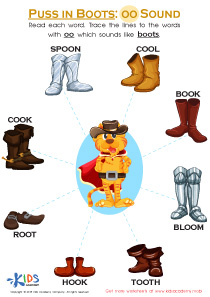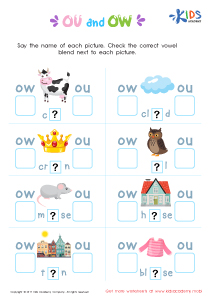Vocabulary expansion Normal Vowel Blends Worksheets for Ages 8-9
6 filtered results
-
From - To
Enhance your child's vocabulary with our engaging Vocabulary Expansion Normal Vowel Blends Worksheets, specially designed for ages 8-9. These worksheets focus on vowel blends to help young learners recognize and combine sounds, paving the way for improved reading and writing skills. Designed by educators, each worksheet features captivating activities that not only boost vocabulary development but also foster critical thinking and comprehension. Whether in the classroom or at home, these resources make learning fun and effective. Empower your child to master vowel blends while expanding their creativity and language skills. Explore our collection and watch your child's confidence soar!
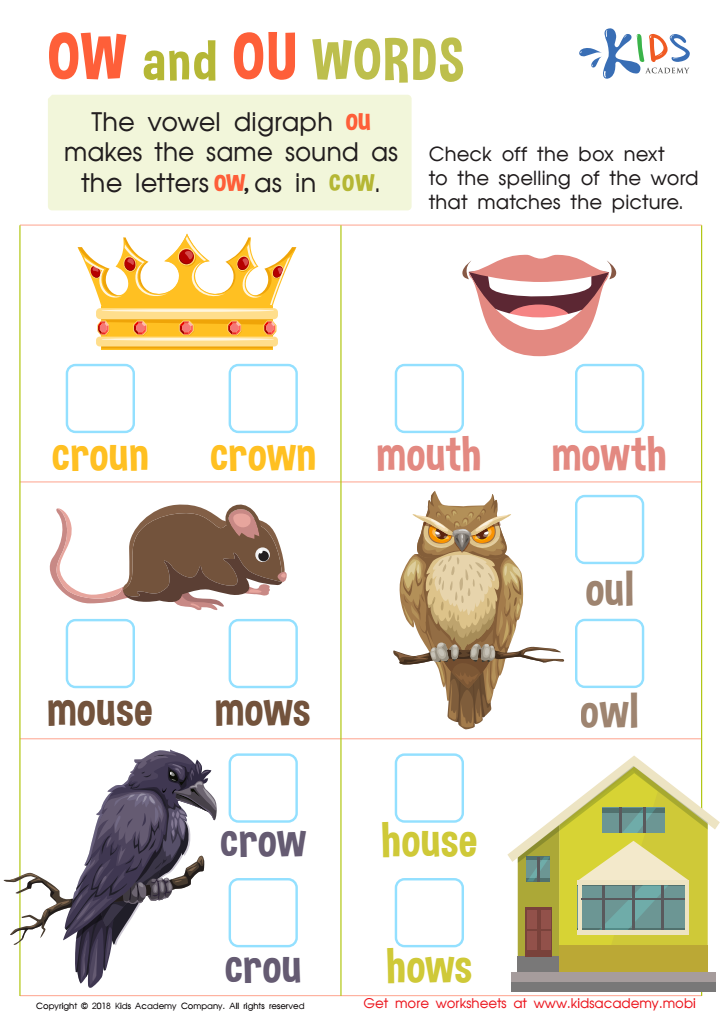

Reading: OW and OU Words Worksheet
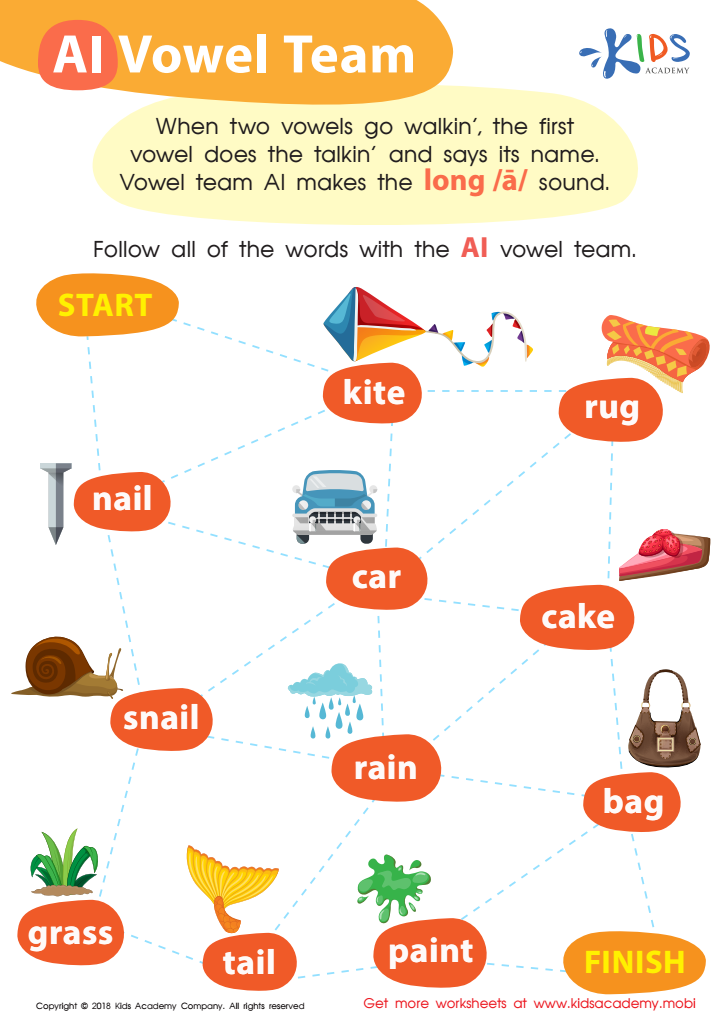

Reading: AI Vowel Team Worksheet
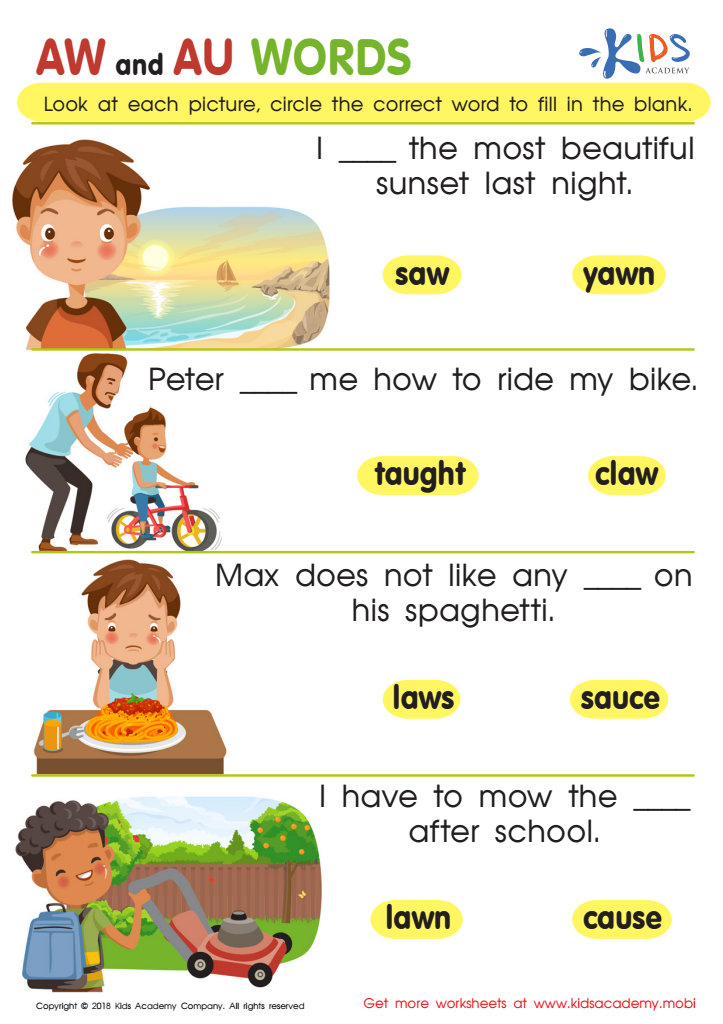

Reading: AW and AU Words Worksheet
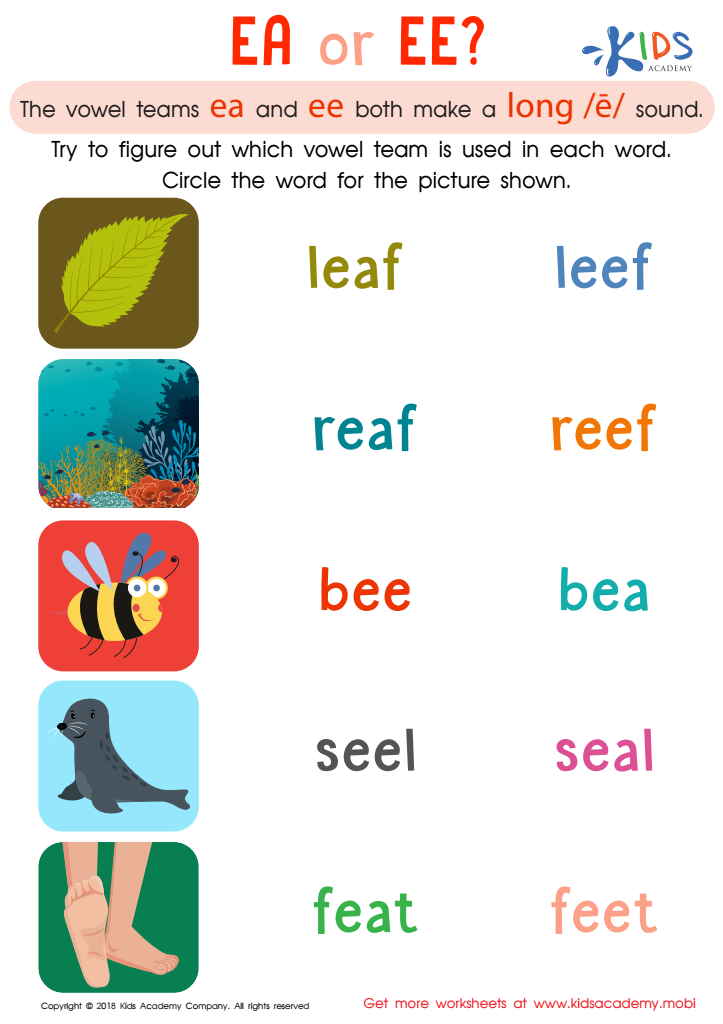

Reading: EA and EE Worksheet
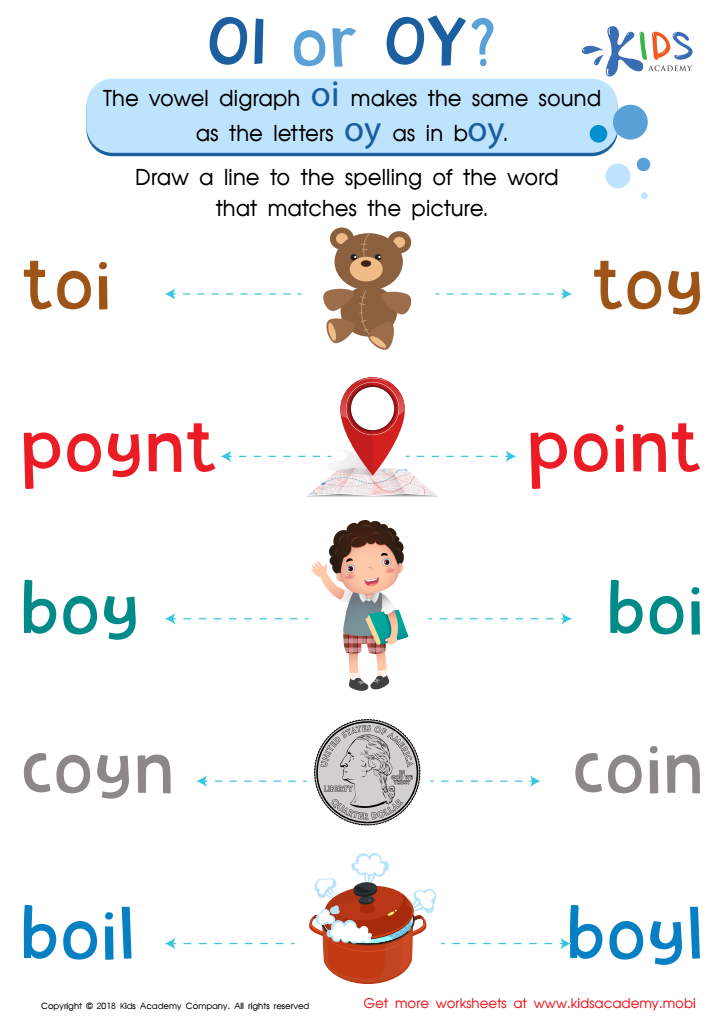

Reading: OI and OY Worksheet


Reading: EA as in Bread Worksheet
Vocabulary expansion is essential for children, particularly between the ages of 8-9, as it lays a strong foundation for effective communication and academic success. At this stage, children are often transitioning from learning to read to reading to learn. Introducing normal vowel blends—combinations of vowels and consonants that create distinct sounds—can significantly enhance their reading fluency and comprehension.
Parents and teachers should prioritize vocabulary expansion because it fosters critical thinking, boosts self-confidence, and enhances writing skills. A robust vocabulary allows children to express themselves more clearly and effectively in both oral and written communication. Understanding vowel blends, such as 'bl', 'cl', and 'st', helps them decode new words and increases their reading accuracy, making literature more accessible and enjoyable.
Engaging children in activities that promote these blends, like word games and phonics exercises, not only makes learning fun but also encourages a lifetime love for discovery and language. By fostering an environment rich in vocabulary development, parents and teachers empower children to articulate their thoughts, engage in conversations, and succeed academically, setting them on a path towards lifelong learning and effective communication skills. Ultimately, vast vocabulary fosters curiosity, understanding, and an appreciation of language.

 Assign to My Students
Assign to My Students












